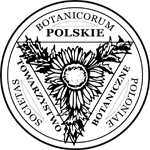Abstract
In this study the pathogenicity of Rhizoctonia spp. isolates towards wheat seedlings in laboratory and greenhouse conditions was evaluated. In both experiments seven features were examined: plant height, roots weight, the percentage of infected stems and leaf sheaths and also the degree of stem and leaf sheaths infection. Isolates R1, R29, R39 and R59 were the most pathogenic. Percentage of infected stems ranged from 25.3 to 82.5 and roots from 35 to 82.3. The amplification of internal transcribed spacer regions (ITS1 and ITS2) between 18S, 5.8S and 28S rRNA genes and sequence analysis of these regions have been shown to be sufficiently variable to resolve two Rhizoctonia species. Random amplified polymorphic DNA (RAPD) was used to assess genetic variability among isolates. The suitability of RAPD method for isolates differentiation at intraspecific level was shown. Using seven arbitrary primers in polymerase chain reaction (PCR) thirty-three RAPD markers were generated. Clustering analysis from RAPD data resolved two groups of R. cerealis isolates at the 36% similarity level. Moreover, significant associations between molecular markers and pathogenicity of R. cerealis isolates were found.
Keywords
ITS; pathogenicity; RAPD; Rhizoctonia cerealis; Rhizoctonia






